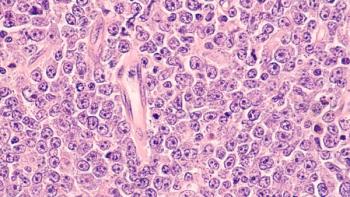
2014 ONS Congress Abstract Wrap: Managing Treatment-Related Adverse Events
Each year, the Oncology Nursing Society (ONS) Annual Congress showcases leading nursing research to advance evidence-based practice, and this year's meeting is no exception.
Each year, the Oncology Nursing Society (ONS) Annual Congress showcases leading nursing research to advance evidence-based practice, and this year’s meeting is no exception. Attendees are learning from an array of podium and poster sessions offering clinical insights that they can deploy in their clinics, especially in the critical area of adverse event management. A snapshot from just a few of these presentations is provided here.
Gabapentin in RT-Treated Oropharyngeal Cancer Patients
Recent research has pointed to a role for gabapentin as an effective agent in controlling the painful oral mucositis experienced by the majority of patients receiving radiotherapy (RT) for oropharyngeal cancer (OPSCC). Sarah Afonso, MS, RN, and colleagues at The Johns Hopkins Hospital in Baltimore, Maryland, conducted a retrospective analysis of the records of 68 OPSCC patients to determine the efficacy of gabapentin across three domains: onset of mucositis, time to initiation of pain relief, and weight loss.
For the analysis, Group 1 (G1 [n = 24]) had a gastrostomy tube (PEG) and did not receive gabapentin; G2 (n = 25) had a PEG and received the drug, and G3 (n = 19) included patients without PEGs receiving gabapentin. The mean percentage of weight loss for G1, G2, and G3 was 8.02, 7.99, and 6.36, respectively; the lower weight loss in G3 suggests that routine placement of a PEG is not necessary, the researchers noted. Patients in the two groups receiving gabapentin progressed to grade 2 mucositis earlier than those who did not receive the drug, but the mean initiation of narcotic use was earlier in the non-gabapentin G1, versus G2 and G3 (19, 33, and 28 days, respectively). The researchers concluded that, “the use of gabapentin is an effective way to manage and prevent pain,” and called for further randomized controlled trials. E67
Proactive Management of Regorafenib-Associated AEs
Regorafenib, an anti-VEGF oral therapy, approved by the FDA in 2012 for use in patients with advanced colorectal cancer previously treated with chemotherapy, and in 2013 for patients with locally advanced, unresectable, or metastatic gastrointestinal stromal tumors previously treated with imatinib and sunitinib, has been associated with certain adverse events (AEs), such as hand—foot reaction (HFSR) and hypertension. In their poster presentation at this year’s ONS Congress, Robin Wachsman, RN, BSN, CCRN, OCN, BCRN, of West Cancer Center in Memphis, Tennessee, and Cathy Maxwell, RN, OCN, of Advanced Medical Specialties in Miami, Florida, provide an overview of nursing strategies and best practices for the management of these and other AEs, so that patients will adhere to therapy and achieve maximal therapeutic benefit.
The typical time to onset of AEs with regorafenib is usually observed in the first treatment cycle, the researchers note, and often ease later on, making it advisable for nurses to see patients weekly during the first cycle of therapy. The researchers stress that providing thorough education before treatment begins is essential to counsel patients on what and when to report any adverse effects. They also note that HFSR can be managed successfully with such measures as moisturizers and avoiding trauma or unusual friction to the feet and that hypertension is also controllable with regular monitoring. E159
Addressing Stomatitis and Pneumonitis in mTOR-Treated Breast Cancer Patients
The development of interventions to manage the side effects of stomatitis and pneumonitis which can be associated with mTOR inhibitor therapy in the breast cancer setting is the focus of research presented in two poster abstracts at this year’s conference. The first study, by researchers at the University of California-San Francisco Helen Diller Family Comprehensive Cancer Center and the University of Maryland Medical Center in Baltimore, is designed to assess the effectiveness of an alcohol-free, sterioid-based mouthwash in women with HR-positive metastatic breast cancer who are being treated with daily the oral mTOR inhibitor everolimus plus exemestane.
The researchers note that about 44% to 86% of women receiving everolimus develop stomatitis within the first month of therapy. As steroid-based mouthwashes have proven effective to treat this adverse event in other patient cohorts, they have planned a single-arm, phase II study involving 97 patients to test the efficacy of dexamethasone solution (0.5 mg/5 mL) when initiated on the first day of everolimus treatment and used four times daily for a minimum of 2 minutes before expectorating. Participants will remain on the mouthwash regimen for 2 months, with the option for an additional 2 months at the physician’s discretion. Investigators will assess the incidence of grade 2 stomatitis at 2 months as the primary endpoint and also evaluate the average number of times per day that participants use the oral solution and the time it takes for stomatitis to resolve during the trial period. E96
The other study, designed to educate nurses about noninfectious pneumonitis (NIP) associated with mTOR inhibitors and led by Mary Peterson, RN, MS, ANP-BC, AOCN, of the Banner MD Anderson Cancer Center in Gilbert, Arizona, highlights clinical data and techniques used to manage NIP in patients with HR-positive, HER2-negative, advanced breast cancer who were part of the phase III BOLERO-2 trial evaluating everolimus (EVE) plus exemestane (EXE), versus placebo plus EXE in this patient population. Sixteen percent of patients receiving the EVE—EXE combination experienced all-grade NIP, the majority of which were grade 1 or 2; 3% were grade 3, and none were grade 4.
As symptoms of NIP are nonspecific with potentially serious consequences, nurses need to carefully monitor for this adverse event. Among the best practices identified in this review are obtaining each patient’s pulmonary history prior to beginning EVE therapy and educating them about the importance of contacting their healthcare practitioner should any unexplained cough or dyspnea occur. Treatment interruptions or dose reductions may be warranted for patients with mild-to-moderate symptoms of respiratory distress until these symptoms are resolved, and antibiotics and corticosterioids may be beneficial. E115
Early Identification of Peripheral Neuropathy in Nab-Paclitaxel—Treated Melanoma Patients
In this study, Heather Nichols, RN, of the University of Arizona Cancer Center in Scottsdale, and colleagues analyzed the management of peripheral neuropathy (PN) in patients with metastatic melanoma enrolled in a phase III trial comparing nab-paclitaxel (n = 264) with dacarbazine (n = 265). In this trial, the most common grade 3 treatment-related adverse events (TRAEs) among patients in the nab-paclitaxel arm were PN (25%) versus 0% in the dacarbazine cohort and neutropenia, which occurred in 20% and 10% of patients, respectively.
Nichols et al noted that although the efficacy of pharmacotherapy for PN has not been determined, clinical trials have demonstrated that early dose modifications can be effective in managing PN. With research supporting a role for nab-paclitaxel for the treatment of chemotherapy-naïve patients with metastatic melanoma, the researchers recommend that oncology nurses work to identify preexisting PN as well as those patients who may be at risk for the condition, in addition to monitoring any changes in PN in the course of therapy, to facilitate early intervention and provide the best patient outcomes. E166
2014 Oncology Nursing Society Annual Congress: podium and poster session abstracts. Oncol Nurs Forum. 2014;41(2):E64-E171.
<<<


















































































